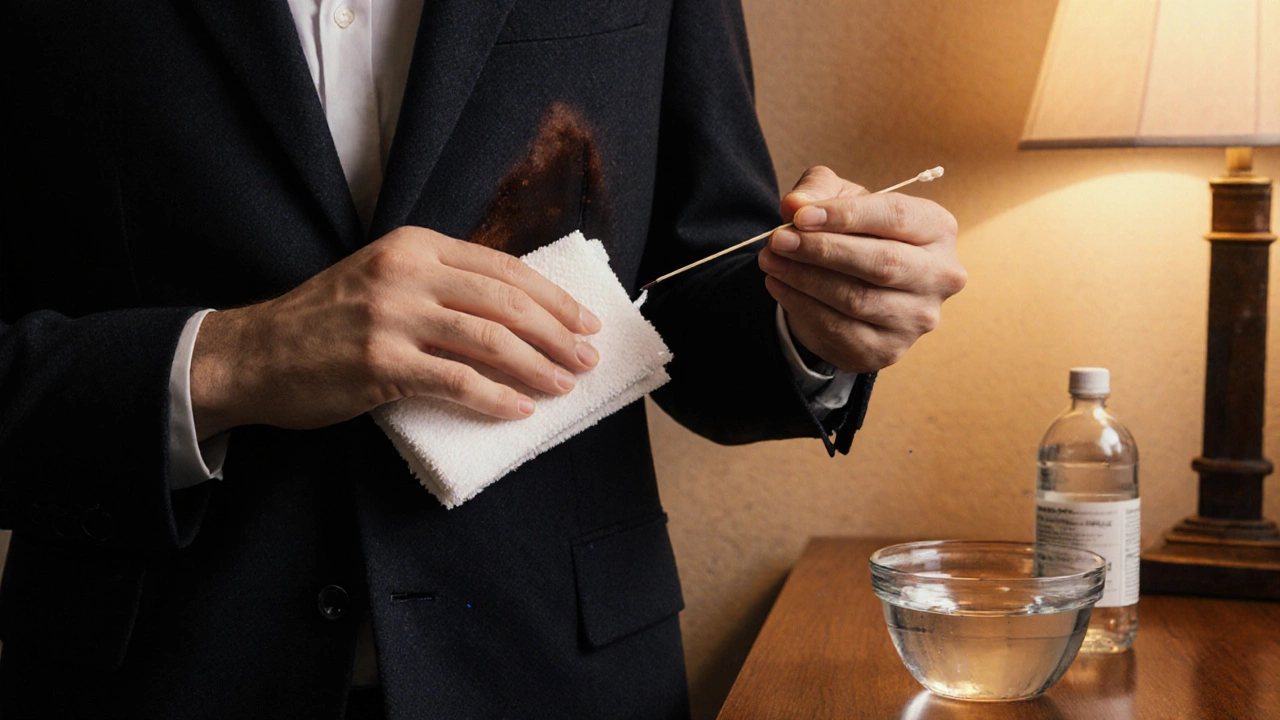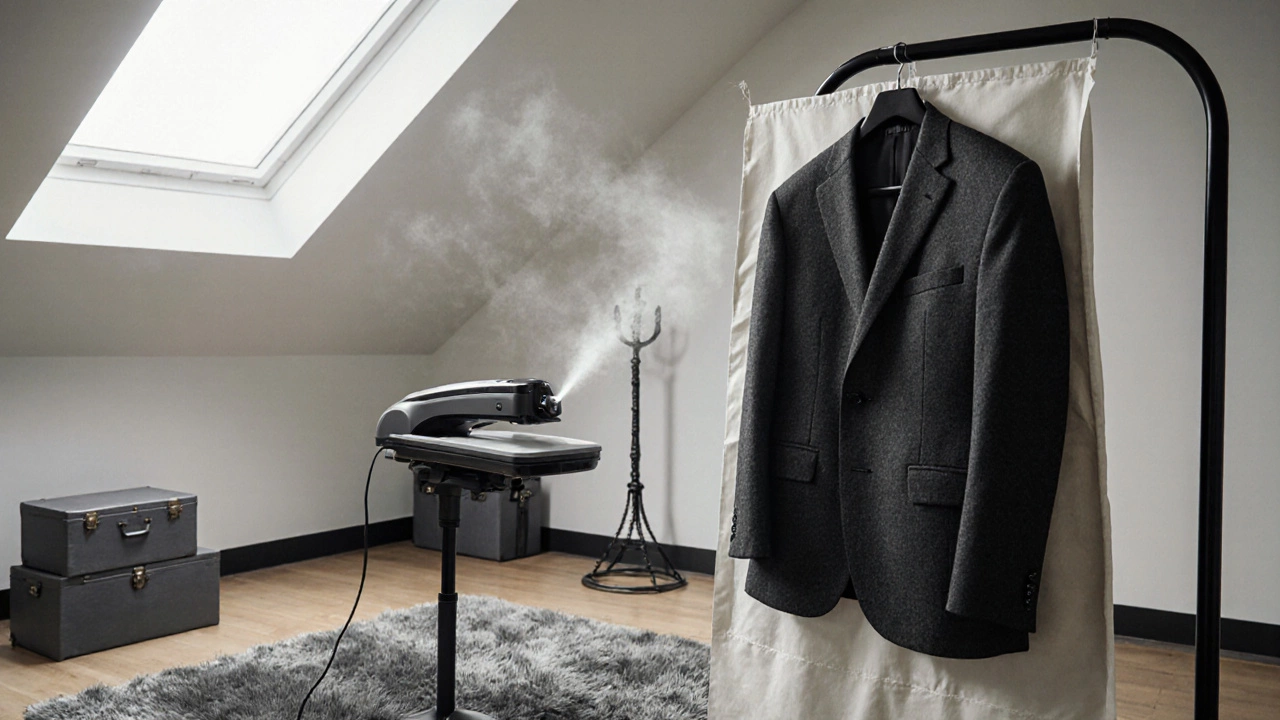Suit Care Calculator
When you’ve spent good money on a tailored suit, you want it to look sharp for years. Yet the question that pops up at every wedding, interview, or gala is the same: wash a suit. Over‑cleaning can wear out delicate fibers, while under‑cleaning lets odors and stains set in. This guide walks you through the science of fabrics, real‑world cleaning schedules, and practical tips so you can keep your suit looking fresh without ruining it.
What makes a suit different from everyday clothes?
First, understand that a Suit is a coordinated set of jacket and trousers, usually made from woven fabrics designed for a polished look. Suits are built for structure, drape, and longevity, which means the fibers and construction methods differ from a t‑shirt or jeans. The fabric choice dictates how often you can safely wash it.
Know your fabric - the foundation of cleaning frequency
Here’s a quick rundown of the most common suit materials and what they tolerate:
- Wool is a natural fiber prized for its breathability, wrinkle resistance, and ability to recover from creasing. It absorbs odors but prefers dry cleaning for heavy stains.
- Cotton is a breathable, lightweight fiber that wrinkles easily and can be hand‑washed in cool water. It tolerates more frequent cleaning than wool.
- Linen is a summer‑friendly fiber that drapes loosely and wrinkles naturally, best cleaned by hand or gentle dry cleaning.
- Synthetic blends (polyester, viscose, rayon) add durability and wrinkle resistance, but they can trap oil‑based stains that need spot treatment.
Knowing the fabric lets you choose between a quick spot clean, a hand wash, or a professional dry‑clean cycle.
Dry cleaning vs. hand washing - when to choose each
Traditional dry cleaning uses a solvent (usually perchloroethylene) that lifts oils without saturating the fibers. It’s ideal for:
- Heavy oil‑based stains (e.g., food, body oil)
- Structured wool or cashmere suits that need to retain shape
- Garments with linings, interfacings, or delicate stitching
Most high‑end suiting brands recommend dry cleaning no more than 4-6 times a year. Over‑dry‑cleaning can strip natural oils from wool, making it feel brittle.
Hand washing, on the other hand, uses water and mild detergent. It’s safe for:
- Cotton or linen suits that have been worn lightly
- Garments with visible soil but no deep oil stains
- When you need a quick refresh between dry‑clean appointments
When you decide to hand wash, use cold or lukewarm water, a gentle wool‑safe detergent, and avoid agitation. Lay the suit flat to dry on a clean towel.

Spot cleaning and stain removal - the first line of defense
Before you consider a full wash, treat any fresh spills immediately. The right Stain remover is a specialized cleaning agent designed to break down specific types of stains without damaging fabric. Here’s a simple process:
- Blot the stain gently with a clean cloth - never rub.
- Apply a small amount of stain remover to a cotton swab.
- Test on an inconspicuous seam first to ensure no color shift.
- Let it sit for 5-10 minutes, then pat with a damp cloth.
For oil‑based stains, a dab of dish soap (which cuts grease) can work before the stain remover. For water‑based spills like coffee, a mixture of white vinegar and water does the trick.
Building a realistic cleaning schedule
Now the big question: how often should you actually wash your suit? The answer depends on three factors - frequency of wear, environment, and fabric.
| Fabric | Light wear (1‑2 events/month) | Moderate wear (3‑5 events/month) | Heavy wear (6+ events/month) |
|---|---|---|---|
| Wool | Dry‑clean 2‑3 times a year | Dry‑clean 4‑5 times a year | Dry‑clean + hand‑wash between sessions |
| Cotton | Hand‑wash 3‑4 times a year | Hand‑wash 5‑6 times a year | Hand‑wash monthly, dry‑clean as needed |
| Linen | Hand‑wash 2‑3 times a year | Hand‑wash 4‑5 times a year | Hand‑wash every 1‑2 months |
| Synthetic blend | Dry‑clean 2‑3 times a year | Dry‑clean 4‑5 times a year | Dry‑clean + spot clean weekly |
These are guidelines, not hard rules. If you notice odors, visible dirt, or the lining feeling damp, it’s time for a clean regardless of schedule.

After cleaning - drying, pressing, and storing
How you treat a suit post‑clean matters as much as the cleaning itself.
- Drying: Never tumble‑dry. Lay the jacket on a padded hanger and the trousers on a flat surface or a hanger with clamps. Allow natural air‑drying away from direct heat.
- Pressing: A proper Suit press is a specialized steaming or pressing device designed to reshape suit fabrics without scorching them gives a crisp look. If you don’t own one, a steam iron held a few inches above the fabric works.
- Storage: Use a breathable Garment bag is a protective cover made of cloth or non‑plastic material that allows airflow while shielding the suit from dust. Avoid plastic-it traps moisture and encourages mildew.
Occasional rotation of suits also lets fibers recover, especially for wool.
Pro tips and common pitfalls
Here are a few insider tricks that keep suits looking runway‑ready:
- Use a lint roller before any cleaning session to lift surface dust.
- Invest in a good hanger with a rounded shoulder to maintain the jacket’s shape.
- Don’t over‑saturate when hand‑washing - a quick dip is enough.
- Watch the label. Care tags often specify “dry clean only” for a reason.
- Avoid perfume on the fabric. It can discolor delicate fibers over time.
And a big no‑no: never iron directly on the fabric without a pressing cloth; you risk shiny spots that are impossible to fix.
Frequently Asked Questions
Can I machine wash a suit?
Generally no. Machine cycles are too aggressive for most suit fabrics and can distort the tailoring. Hand washing or professional dry cleaning are the safest routes.
How do I know if a suit really needs dry cleaning?
If you see oil‑based stains, the suit smells lingeringly of sweat, or the lining feels damp, it’s time for dry cleaning. Light soil can often be handled with spot cleaning or a brief hand wash.
Is it okay to wear the same suit multiple days in a row?
Yes, as long as you let it air out between wears. Hang it in a well‑ventilated closet, let the fibers breathe, and brush off any surface dust.
What temperature should I use for hand‑washing wool?
Cold or lukewarm water (max 30°C / 86°F) is best. Hot water can cause shrinkage and felting.
Can I use a regular laundry detergent for a suit?
Opt for a wool‑specific or mild detergent. Regular detergents are often too harsh and can strip natural oils from the fibers.
Follow these guidelines, and your suit will stay crisp, comfortable, and ready for any occasion for years to come.
